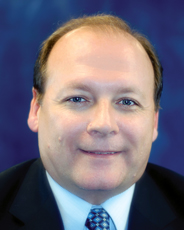
Long-term care facilities are implementing electronic health records (EHR) at a rapid pace. For example, at our company, we have completed more EHR implementations in the last two and half years than we did in the previous five years combined — and for good reason. EHR systems help facilities capture crucial clinical, financial and operational data to help them work more efficiently and deliver better care to residents.
When we first meet clients, however, we occasionally hear some reoccurring myths that they have heard about EHR systems. The most common of these are that they expect the software will: solve all their problems, know more than their staff and providers, and make all the decisions for them. Here, we will attempt to shed some light on these myths so that long-term care facilities will be better prepared and have a more satisfying experience once their EHR is implemented.
Myth #1: EHR technology will solve all of my facilities’ problems
As we tell our clients, EHR systems are a powerful organizational tool, but they cannot replace your staffs’ and providers’ skills, experience and hard work. To grasp the EHR technology’s impact, planning is critical. Long-term care facilities need to analyze current processes, highlight inefficiencies and identify steps that will need to change so that they receive the greatest return on investment from the EHR system. Financial and staffing resources must be dedicated to this planning. Most importantly, choosing the right, experienced EHR vendor partner that can help with this planning will ensure a smooth implementation.
Myth #2: EHR technology knows more than my staff and providers
While the EHR system may seem omniscient due to the abundance of data and reports available at your fingertips, the system is only capable of presenting and analyzing data that your staff and providers input or program to have automatically entered. That’s why facilities need to design workflows during their implementation planning phase that allow for easy manual data entry or automated data capture from outside providers and other sources. Facilities should also consider EHR software that integrates all areas of the facility — clinical, financial and operational — through a single interface so data capture is quick and seamless.
Myth #3: EHR technology will make my decisions for me
A properly equipped EHR system can offer clinical and scheduling alerts to the facility to protect residents’ safety and ensure that their continuity of care is maintained, but it’s up to staff and providers to act on those alerts. The technology can also deliver a wealth of reports about the residents’ conditions and how key metrics are trending based on highly specific, real-time data. Again, the EHR system won’t make a decision about their care, but it will give providers and staff ample evidence and confidence to support their own decisions.
While implementing an EHR will improve staff workflows and enhance resident-centric care, its success across your organization depends on how your facility puts it to use. With the appropriate planning and the right EHR vendor partner, the technology can help solve current organizational challenges and prepare the facility for future demands in an increasingly connected industry.
Kirby Cunningham is vice president of strategic clinical initiatives at AOD Software.



